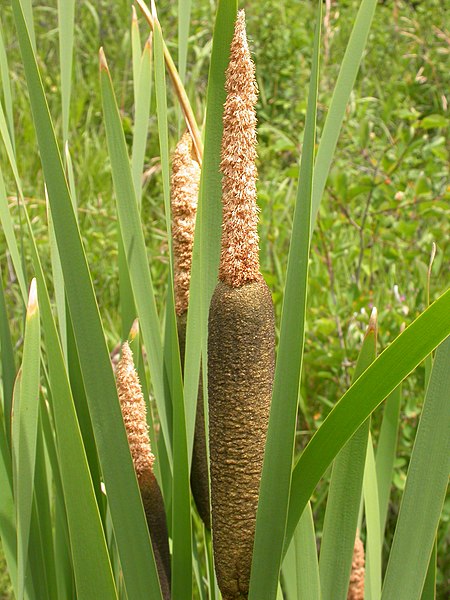Cattail Identification – Typha latifolia
Heads up
You might have seen tall plants with brown, cylindrical tops, growing near bodies of water. These are known as Cattails, a water-loving plant that’s fascinating in many ways. Let’s dive deeper to understand more about this plant, especially if you’re on the lookout during your next nature walk.
The scientific name for the Cattail is Typha latifolia. When we talk about plant families (a way of categorizing plants based on common characteristics), Cattails belong to the Typhaceae family, sometimes just referred to as the Cat-tail family.
Cattail: Key Parts in Photos




Where to find it
Cattails have a preference for really wet areas. This means you can typically find them in places like marshes, wetlands, and near the edges of lakes, ponds, or streams. If there’s a ditch that holds water, there’s a good chance you might see Cattails growing there too. They thrive in areas where the soil remains saturated, and they can grow pretty tall, up to a massive 10 feet.
How to identify Cattail
Cattails have a unique way of flowering. Their flowers don’t look like your typical garden flowers. Instead, they have something called spikes. These are long, slender groups of tiny flowers packed closely together. Each Cattail plant has both male and female flowers. Botanist use the term “monoecious” to describe plants that have both male and female flowers on the same individual. The male flowers are yellowish and are packed in a dense spike that can be up to 10 inches long, located at the top. Just below the male flowers, you’ll find the female flowers, which start as a green spike and later turn reddish-brown to almost black when they form fruit.
Cattails have leaves that are pretty easy to identify. They come from the base of the plant and are stiff and flat. Imagine a strong, green belt – that’s what they look like. These leaves are often about 1/2 inches wide and have a green hue.There’s a sheath, or a protective layer, where the leaf wraps around the stem.
The stem of the Cattail is erect, is of a light green shade, and doesn’t branch out. The plant can spread and form groups because of its long underground stems called rhizomes.
After the flowering is done, it’s time for the fruits. The male flowers, once they release their pollen, wither away and might even fall off. The female flowers, on the other hand, transform into thick spikes where each flower forms a seed. These seeds have long white hairs attached to them.
During the fruiting time, the spikes can burst open. This allows the fluffy seeds to be taken away by the wind, helping the plant spread to new places. If you’ve ever seen a Cattail with what looks like cotton coming out from its top during fall, that’s the seed dispersal in action. What remains behind are the stalks of the individual flowers, which have a bristle-like tip.
Want to learn more?

Disclosure: This post includes affiliate links. If you make a purchase through these links, we may earn a commission at no extra cost to you. We appreciate your support, as it helps keep this website running. Alternatively, you can search for the book title on Amazon if you prefer not to use the links. Thank you for your understanding and support!
